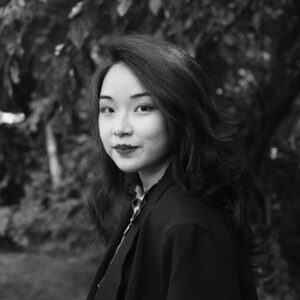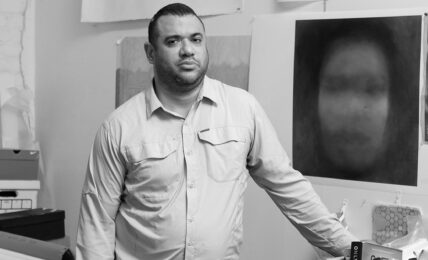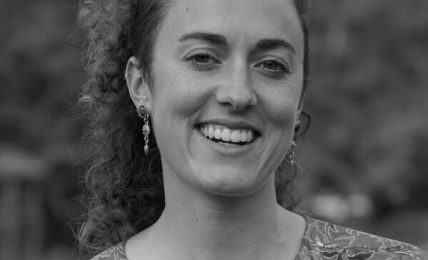Digital America interviewed Jiaqi Liu in April of 2025 on her work The Clock.
:::
Digital America: The Clock (2022), explores the “distance between abstraction and substance, the definition of an object and the object itself.” Viewers are able to experience the passage of time through an interactive experience with clocks where each person’s experience on the page forms the work itself by recording time spent on site. With over 200 viewer experiences logged as of April 2025, has the meaning of the work changed as you watch it unfold?
Jiaqi Liu: It’s been fascinating to watch The Clock develop through the traces left behind by those who pass through it. I have shared the work in various settings: among artists, scientists, and academics; across geographies; and now online through Digital America, where the audience could be from virtually anywhere. The diversity of audience experiences continues to surprise me. I have had the chance to get feedback from some of the viewers. Based on what I heard: some viewers interpreted the piece as a meditation on time; others read it as a critique of art institutions. Some found the text poetic; some succeeded in extracting meaning from it; some found it entirely nonsensical. There were audiences who rejected the invitation to scan the QR code altogether. All of these responses are sustained by and feed into the work’s open-ended structure, and become part of an ever-growing archive. Seeing all these experiences come into the archive is what excites me most – it confirms my conceptual aim, which is to create a shared structure that houses entirely individualized experiences.
The archive itself is designed to capture these experiences quantitatively: as of April 2025, over 200 viewer interactions have been recorded, totaling more than 3 hours of collective time. These numbers are informative and, for me, oddly compelling. In more traditional forms of art, one rarely encounters such a measurable record of audience engagement. As they grow, these records challenge my own ex-ante expectations and perceptions as well. This tension – between perception, intention, and interaction – continues to keep the piece alive for me.

DigA: You’ve stated that you want the “shared pattern underlying every and any thing” to take form in your art. What is your perception of time and how (or how not) does it play out in the piece?
JL: It’s very difficult for me to put into words what my perception of time is. It certainly interests me quite a bit. In fact, this is one aspect of this work, and of art in general, that I find greatly empowering: to be able to tap into, leverage, and share things that I don’t know and can’t articulate, and to achieve resonance before comprehension. This feels Archimedean to me, and I absolutely love that.
Back to this work: what interests me is not how time passes, but how we come to notice – or fail to notice – that passage. To share this interest with the audience, I didn’t represent or illustrate time, but staged an encounter with it for this tension to play out.
There is also something fundamentally irreversible about time. When the viewer realizes they have spent minutes reading something completely senseless, there is no recourse – they can’t take that time back. This irreversibility is what makes time uniquely absolute among all things we experience. It doesn’t accommodate regret or correction but only allows reflection. I find that brutal, but also beautiful.
DigA: Originally an installation, your work has a strong emphasis on the physical as well as the virtual. What was your experience adapting the piece for Digital America, where our gallery is the browser?
JL: Although a web-based experience at its core, The Clock, at its inception, was not meant to exist exclusively in the digital realm. In fact, much of its meaning depends on the transition between the physical and the digital of the viewer’s perception.
Adapting the work for Digital America presented a unique challenge. As a platform dedicated exclusively to browser-based art, it emphasizes direct viewer interaction over documentation or exhibition records – a curatorial approach I admire. But because of the unique hybrid experience The Clock offers, there was no direct precedent in past issues that I could refer to. I had to rethink the presentation of the work from the ground up while remaining faithful to its conceptual foundation.
My solution was to treat the browser itself as a gallery space. I created a composition that mirrors the spatial arrangement of the original installation. Subtle hover effects provide minimal instruction, guiding viewers to scan the QR code with their phones – replicating the physical gesture that was central to the original experience. In this way, the transition between physical and digital is reintroduced.
This adaptation was made possible through close collaboration with the Digital America team. Their openness and creativity were instrumental in reimagining the piece for the browser-based format, and I am grateful for their thoughtful support throughout the process.

DigA: Your background in computer and information science often comes through your art such as in Mirage (2023) which has themes of air density and light refraction and Random Thoughts (2023) which has a focus on computer generation and pixels. In many ways, The Clock differs from these works, focusing more on philosophical ideologies. What inspired you to take on something a little different?
JL: In fact, The Clock was made before the other two pieces mentioned. It was my undergraduate thesis and marks my transition from an image maker to a more concept-driven artist. I also see it as my “hello world” to the art world. In many ways, it remains one of the most important pieces to me – both personally and artistically.
I earned my BFA from NYU Tisch in Photography and Imaging, where I was trained as a photographer and filmmaker. My focus remained on visual storytelling until I encountered the work of my professor, Wafaa Bilal, who would later become my advisor and mentor. His practice – project-based, strong in concept, and deeply interactive, performative, and provocative – opened the door to contemporary art for me. I became especially interested in the relational potential of interactivity – how a work could exist not just as an object to be viewed but as a system of exchange with its audience. That curiosity led me to explore tools that could facilitate this kind of engagement, which naturally drew me toward technology. Eventually, it led me to pursue formal training in computer and information science and even work professionally in the tech industry.
That said, my approach to art has always been grounded in concept. I begin with a question, a message, or a tension I want to explore, and then I choose the medium that serves it best. This principle holds true for The Clock, and also for later works like Mirage and Random Thoughts. Conceptually, I find myself – almost subconsciously – drawn to ideas rooted in science and technology, as these fields have indeed been a significant part of my life and interests. In terms of medium, I have always seen technology as one possibility among many – a powerful one, and one I happen to be more fluent in at the moment – but certainly not the only one. As I am pursuing my MFA right now, I am actively expanding my artistic toolbox, from more traditional art mediums to emerging forms that may not fully exist yet.
DigA: Can you talk a bit about what you’re working on now?
JL: I’m currently working on a few projects simultaneously. Most are still in early development, but one is nearly production-ready: a performance/video art piece where human educates water. Follow me on Instagram @jiaqiliu__ to stay tuned!
:::
Check out Jiaqi Liu’s The Clock.
:::

Jiaqi Liu is a conceptual project artist. She is currently pursuing her MFA at the School of the Art Institute of Chicago with the Pritzker Fellowship and the Joan Truckenbrod Scholarship. Previously, she received a Dual-MS in Computer and Information Science from Cornell University with the Connective Media Fellowship, as well as a BFA summa cum laude with honors from NYU Tisch.



